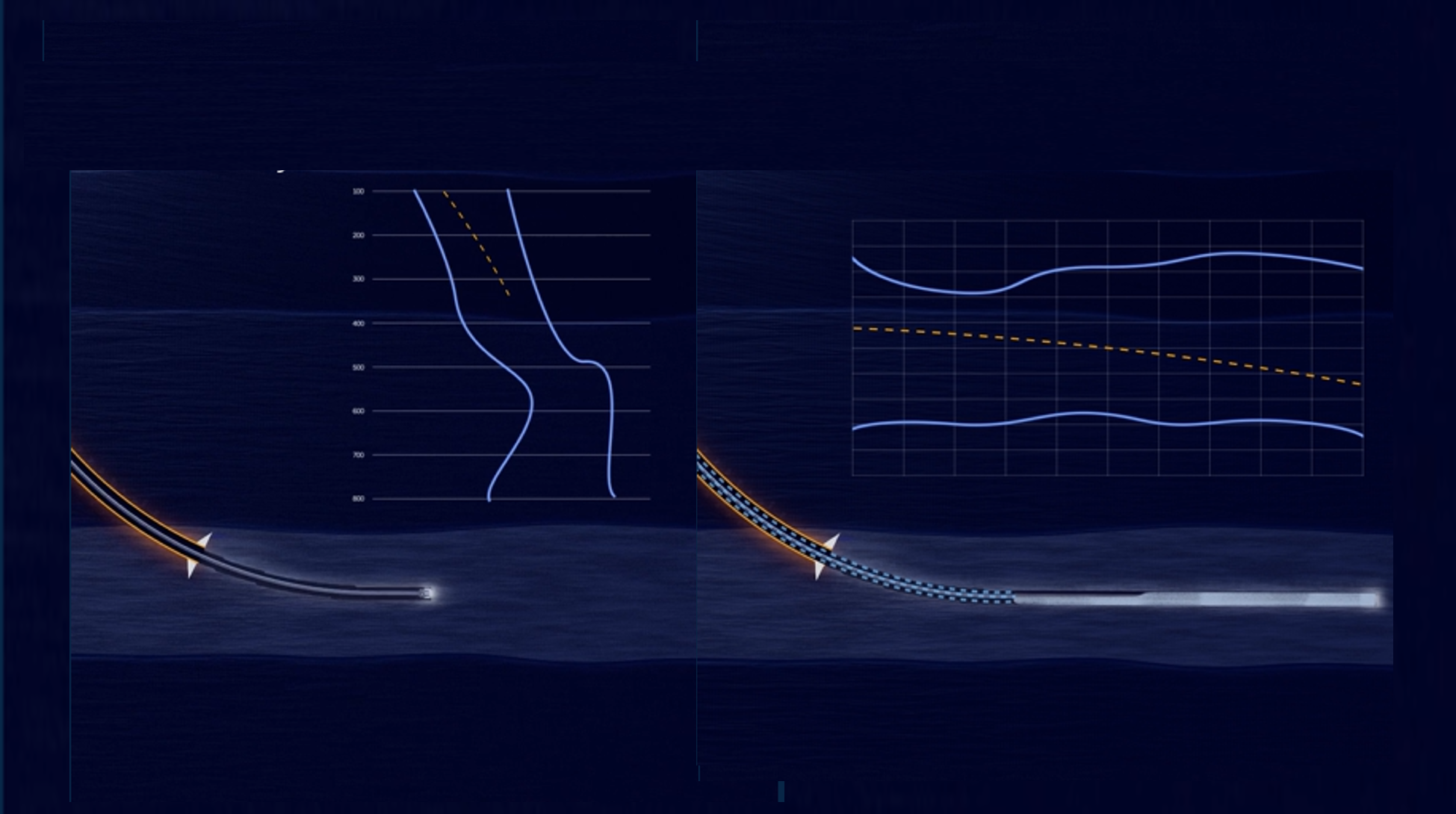Automatic kick detection is often talked about—but rarely understood in practical terms.
While early warning systems have been a part of well control for years, most rely on static thresholds, indirect indicators, or manual interpretation. The reality is, these methods fall short in dynamic drilling environments where lag, motion, and operational noise can mask the early signs of a kick.
In this article, we examine what true automatic kick detection looks like—and what it takes to make it work in real-world conditions. From motion compensation to real-time mass flow analysis, you'll learn how new surface-based systems like EC-Monitor™ are redefining what’s possible—bringing us closer to safer, smarter, and faster well control response.
Understanding Kick Detection
Before we delve into the world of automatic kick detection, let's first establish what kick detection is and how it's traditionally performed. Kick detection involves monitoring the wellbore for any unexpected influx of formation fluids, such as gas, oil, or water.
Conventional methods rely on a combination of pit levels, paddle wheels in the flow line, and coriolis flow meters to gauge the flow in and out of the wellbore.
The standard procedure includes patiently waiting for a cessation of all flow, followed by a meticulous static flow check, which can take precious minutes.
This approach demands a vigilant eye, and even then, may not provide deterministic results. Human judgment and reaction time play a significant role, potentially allowing the kick to escalate before action is taken.
Read more: 8 consequences of late kick detection
The Promise of Automatic Kick Detection
Automatic kick detection promises to revolutionize this process by eliminating human uncertainty factors and removing human interpretation, and delivering deterministic results.
The EC Monitor employs coriolis mass flow meters to measure the flow in and out of the wellbore while drilling is in progress. What sets it apart is its volumetric measurements during non-circulating events providing continuous dynamic flow checks which eliminates the need for prolonged waiting periods. It offers real-time insights into flow rates, ensuring that any anomalies are detected immediately.
Furthermore, the EC Monitor goes beyond traditional kick detection methods by tracking the movement of the telescopic joint and compensating for rig movements, including heave, pitch, and roll. This level of automation reduces cognitive load on drillers, ensuring they don't need to interpret data or make judgment calls.
When the EC Monitor sounds an alarm, there is no room for doubt—it's a clear signal of either a gain or loss, a deterministic response.
How EC-Monitor Works
To understand what you can gain from the EC Monitor, let's delve into how it works:
Elimination of External Effects
The system negates the impact of rig and slip-joint motion, providing highly accurate return volume flow measurements. This feature is crucial for rapid detection of flow anomalies, reducing time spent on flow-checking.
Inline Trip-Tank Design
Positioned above the telescopic joint, the EC-Monitor functions as an inline trip-tank monitoring directly on the well and absorbing volume fluctuations caused by the telescopic joint motion.
Sensor Utilization and Compensation
Simple sensors measure return flow fluctuations due to the telescopic joint, with the EC-Monitor system compensating for these variations.
Centrifugal Pump Integration
A centrifugal pump transfers mud from the inline trip-tank to the flowline, maintaining full lines and eliminating the uncertainty caused by changing fluid volumes in the flowline.
Advanced Algorithms for Data Processing
The system employs sophisticated algorithms to filter out sensor noise and process disturbances.
Flow Spool Placement and Function
Located directly in the riser string above the telescopic joint, the flow spool absorbs volume changes associated with heave, accounted for in the EC-Monitor software.
Continuous Volume Monitoring
This setup allows for uninterrupted and accurate comparison of volume in versus volume out, facilitating dynamic and continuous flow monitoring across all well stages.
Read more: Improving volume control and influx detection for less experienced crews
Additional Operational Advantages you can gain with EC-monitor:
- Faster connections without no-flow waiting.
- Streamlined flow checks, saving time.
- Rapid diverter function testing for enhanced safety.
- No need to lower fluid levels when pulling out of the hole.
- Precision in detecting minor flow rate changes.
- Identification of the U-tube effect for better well insights.
- Added safety and precision through volumetric measurement in the well.
- Assistance in verifying barite and chemical calculations.
- Versatility with compatibility for MPD systems.
- Enhanced RCD sealing element monitoring.
Get your copy of the free webinar: EC-Monitor - Enhanced kick and loss detection
Conclusion: A Giant Leap Towards Automated Kick Detection
So, does automatic kick detection exist?
The answer is yes, it is just not that deterministic yet. What does not exist yet is automatic well control, which will have to start with accurate gain/loss detection. This is where the EC Monitor represents a giant leap toward realizing this goal. With its real-time, deterministic kick detection capabilities and continuous monitoring, it offers a level of safety, efficiency, and reliability that traditional methods simply can't match.
You can eliminate uncertainty factors, remove human interpretation, reduce downtime, and enhance the overall safety of your drilling operations. So, while fully automatic kick detection may not be a reality yet, EC Monitor stands not only as a testament to how far we've come, but also offers tried and tested technology that can help your operations today whilst perhaps offering a promising glimpse into the future of drilling technology.
Want to learn more? Get your copy of the e-book 9 Criteria to Consider Before Selecting Technology for Kick/Loss Detection - A Comparison Guide Between Conventional Technology & EC-Monitor» below 👇
Get the latest updates
Want to stay updated on the latest knowledge articles and news from Enhanced Drilling?
.jpg?width=290&name=Snorre%20Lutnes%20(gammelt%20bilde).jpg)







